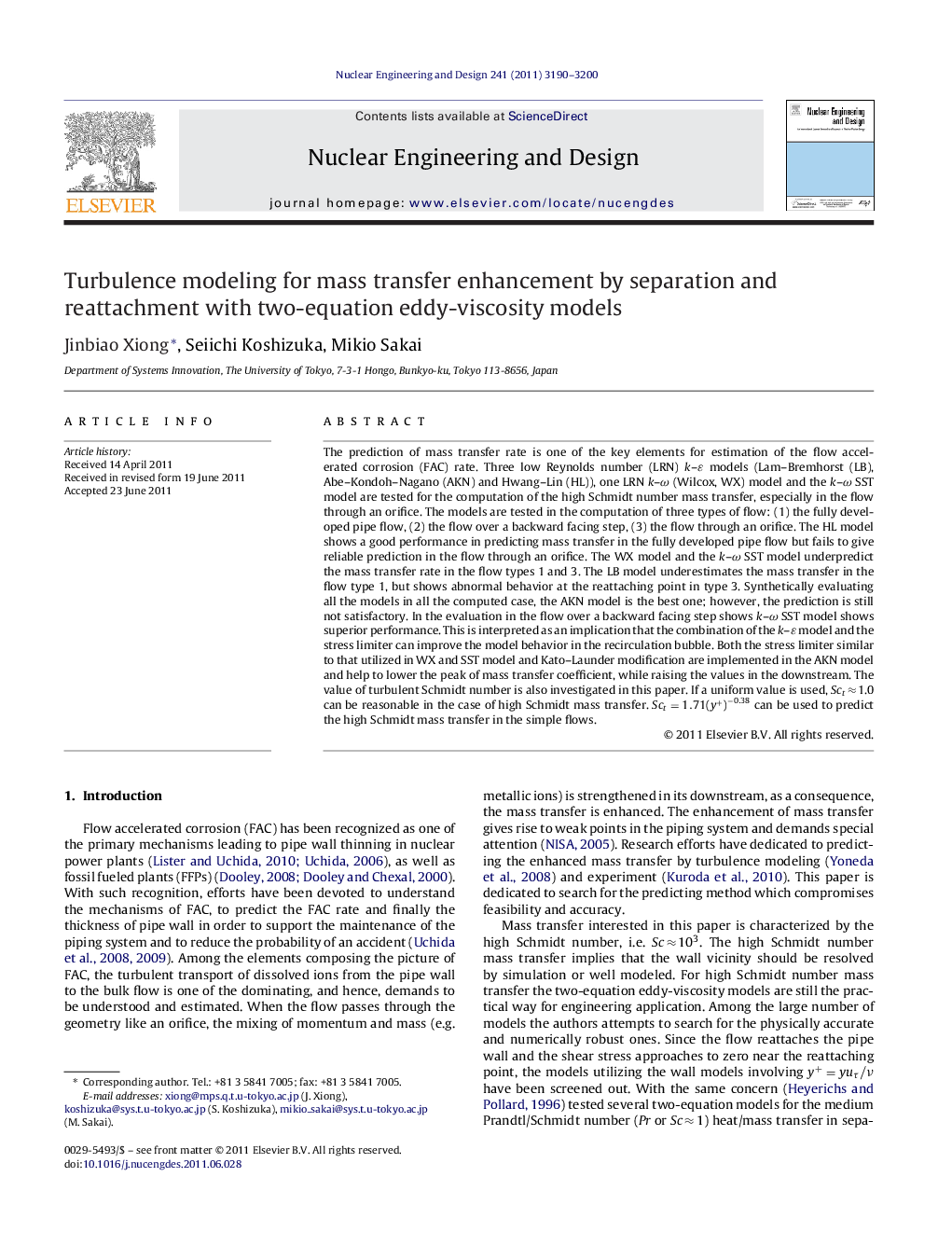| Article ID | Journal | Published Year | Pages | File Type |
|---|---|---|---|---|
| 297438 | Nuclear Engineering and Design | 2011 | 11 Pages |
The prediction of mass transfer rate is one of the key elements for estimation of the flow accelerated corrosion (FAC) rate. Three low Reynolds number (LRN) k–ɛ models (Lam–Bremhorst (LB), Abe–Kondoh–Nagano (AKN) and Hwang–Lin (HL)), one LRN k–ω (Wilcox, WX) model and the k–ω SST model are tested for the computation of the high Schmidt number mass transfer, especially in the flow through an orifice. The models are tested in the computation of three types of flow: (1) the fully developed pipe flow, (2) the flow over a backward facing step, (3) the flow through an orifice. The HL model shows a good performance in predicting mass transfer in the fully developed pipe flow but fails to give reliable prediction in the flow through an orifice. The WX model and the k–ω SST model underpredict the mass transfer rate in the flow types 1 and 3. The LB model underestimates the mass transfer in the flow type 1, but shows abnormal behavior at the reattaching point in type 3. Synthetically evaluating all the models in all the computed case, the AKN model is the best one; however, the prediction is still not satisfactory. In the evaluation in the flow over a backward facing step shows k–ω SST model shows superior performance. This is interpreted as an implication that the combination of the k–ɛ model and the stress limiter can improve the model behavior in the recirculation bubble. Both the stress limiter similar to that utilized in WX and SST model and Kato–Launder modification are implemented in the AKN model and help to lower the peak of mass transfer coefficient, while raising the values in the downstream. The value of turbulent Schmidt number is also investigated in this paper. If a uniform value is used, Sct ≈ 1.0 can be reasonable in the case of high Schmidt mass transfer. Sct=1.71(y+)−0.38Sct=1.71(y+)−0.38 can be used to predict the high Schmidt mass transfer in the simple flows.
► We selected and evaluated five two-equation eddy-viscosity turbulence models for modeling the separated and reattaching flow. ► The behavior of the models in the simple flow is not consistent with that in the separated and reattaching flow. ► The Abe–Kondoh–Nagano model is the best one among the selected model. ► Application of the stress limiter and the Kato–Launder modification in the Abe–Kondoh–Nagano model helps to improve prediction of the peak mass transfer coefficient in the orifice flow. ► The value of turbulent Schmidt number is investigated.
